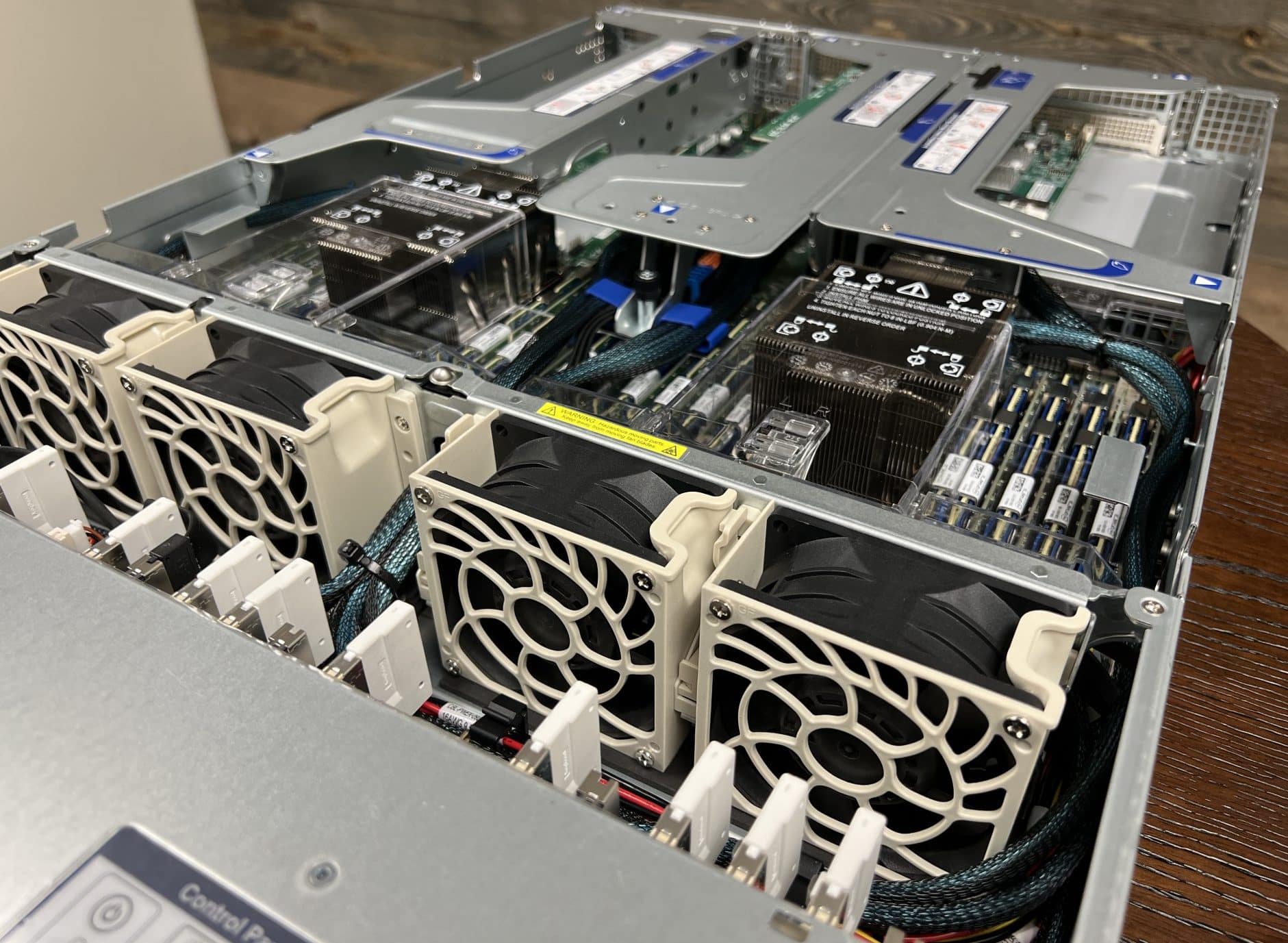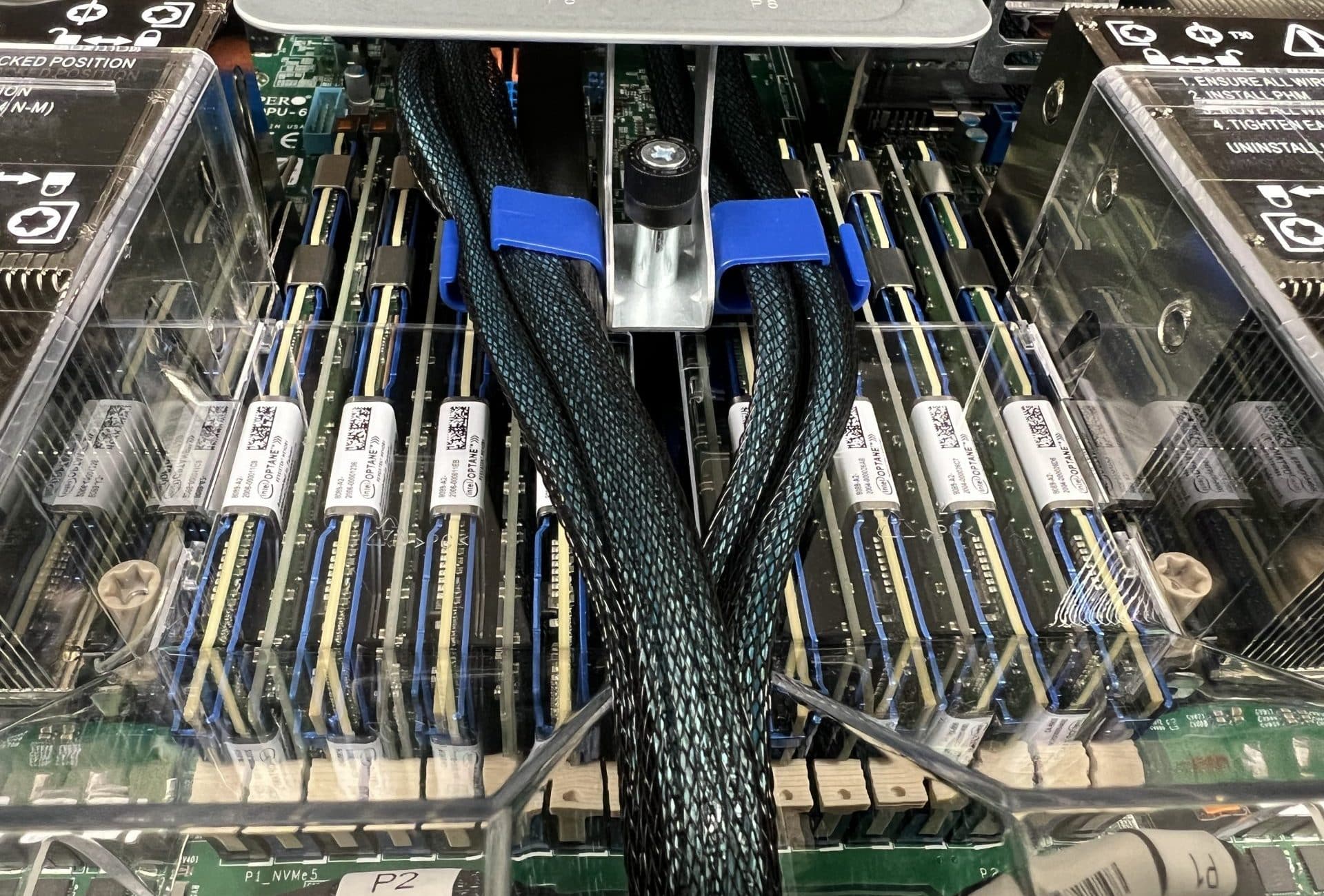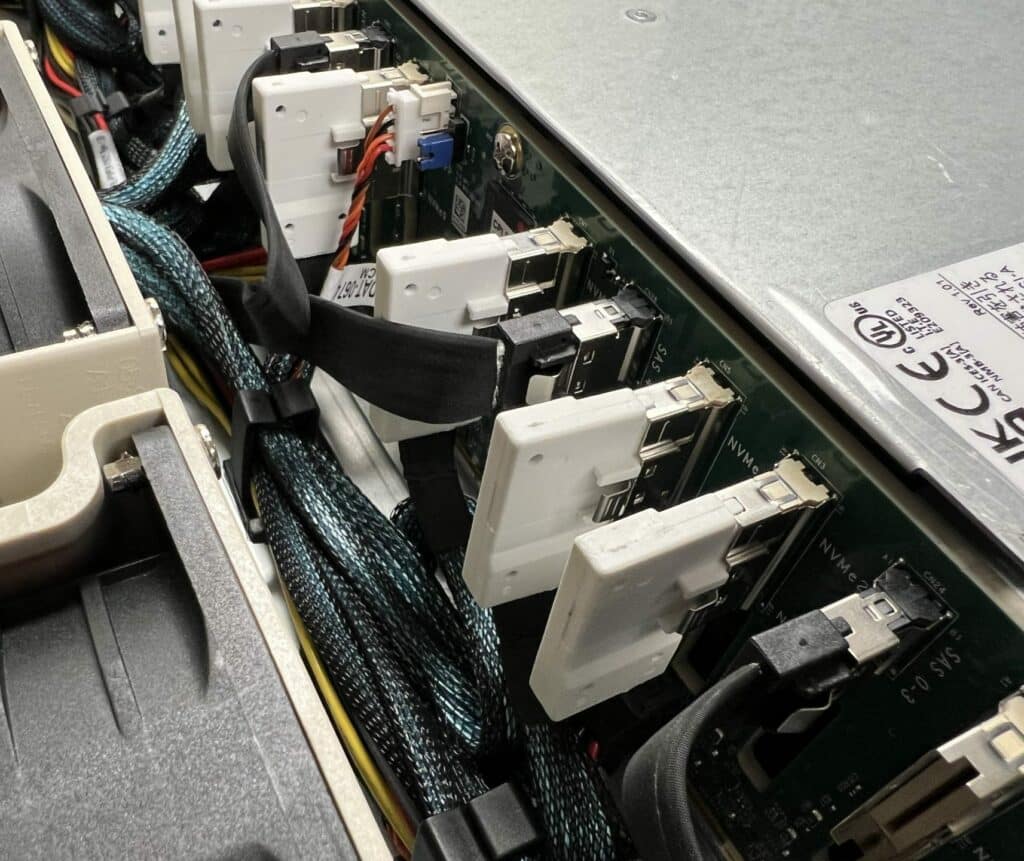The Supermicro Ultra SuperServer SYS-220U-TNR offers 22x hybrid 2.5” hot-swap drive bays, supporting NVMe, SATA, or SAS storage in a 2U rack system. As part of Supermicro’s X12 Ultra motherboards, this system features two third-generation Intel Xeon Scalable processors (Ice Lake) making it ideal for software-defined storage, cloud computing, and telecom use cases. The advanced design allows two slots for SATA/SAS drives and 22 direct-connect NVMe SSDs, all accessible from the front of the server. There are 88 PCIe Gen 4 traffic lanes to meet enterprise workflow performance demands.
The Supermicro Ultra SuperServer SYS-220U-TNR offers 22x hybrid 2.5” hot-swap drive bays, supporting NVMe, SATA, or SAS storage in a 2U rack system. As part of Supermicro’s X12 Ultra motherboards, this system features two third-generation Intel Xeon Scalable processors (Ice Lake) making it ideal for software-defined storage, cloud computing, and telecom use cases. The advanced design allows two slots for SATA/SAS drives and 22 direct-connect NVMe SSDs, all accessible from the front of the server. There are 88 PCIe Gen 4 traffic lanes to meet enterprise workflow performance demands.

Supermicro Ultra SuperServer SYS-220U-TNR
After attending SuperComputing, Brian hosted his friend Vic Malyala from SuperMicro for one of his podcasts to discuss the show and some of the new products on display. Check it out here. As a follow-up, Brian’s pal from Intel, Allyn Malventano, drove up from Kentucky and brought along the Supermicro SuperServer SYS-220U-TNR from his lab. Brian and Allyn provide a technical walkthrough of the system and talk about how it can support all those drives in a 2U server. We recorded the session and posted the video here.

SuperMicro Ultra SuperServer SYS-220U-TNR
This server leverages both Intel’s new CPUs and Intel Optane Persistent Memory 200 series. To meet the demands of enterprise applications, the server supports dual 3rd Gen Intel Xeon Scalable processors, up to 12TB of memory, and up to 4x GPUs. One caveat is the system is only available as a completely assembled unit with a minimum of 2x CPUs, 4x DIMM modules, 1x HDD/HDS/M.2 storage device, plus 1x NIC adapter.

The server can be installed with 24x hot-swap 2.5” storage drives mounted in tool-less drive carriers on the front panel, supporting NVMe, SATA, and SAS. The system supports 22x SAS/SATA/NVMe bays plus 2x hot-swap SATA/SAS bays. To get there, Supermicro had to do quite a bit of engineering. In the photo above, some of the extra cabling can be seen. These cables connect at various points on the motherboard and add-in cards to more or less re-route the PCIe lanes to the front of the server.
This isn’t a trivial task, as server vendors have had to get creative in many cases to get a lot of hot-swap NVMe bays in Ice Lake systems. Many servers that come into the lab have just 8-12 NVMe bays in the front.
Additionally, adding a bunch of NVMe bays creates new challenges when it comes to RAID. There are a number of software RAID options in addition to something like the GRAID card, to help solve this problem. Thankfully Supermicro left a few PCIe lanes available in one of the risers of the SYS-220U-TNR. This should give system builders enough flexibility when it comes to IO and storage performance in this box.
Key Features
|
Final Thoughts
The Supermicro Ultra SuperServer SYS-220U-TNR is ideal for virtualization, cloud computing, and software-defined storage, using the latest Intel technology for the best performance within a 2U form factor. Featuring two third-gen Intel Xeon Scalable processors, the server is flexible, expandable, and powerful enough to support mission-critical workloads.
Sadly Allyn had to take his test system back, so we’re left with just a taste of what could have been when it comes to seeing how much performance we could crank out of this unique configuration. That said, it’s always great to see new gear and we’re looking forward to the next salvo of Supermicro gear that comes in for review.
Engage with StorageReview
Newsletter | YouTube | Podcast iTunes/Spotify | Instagram | Twitter | Facebook | TikTok | RSS Feed



